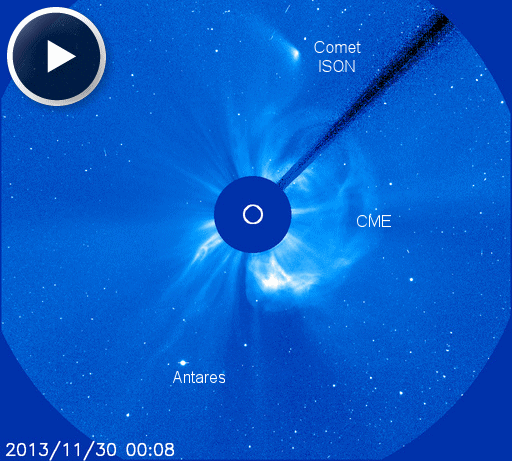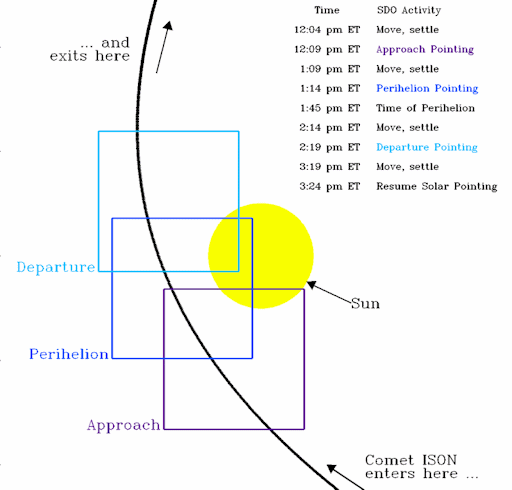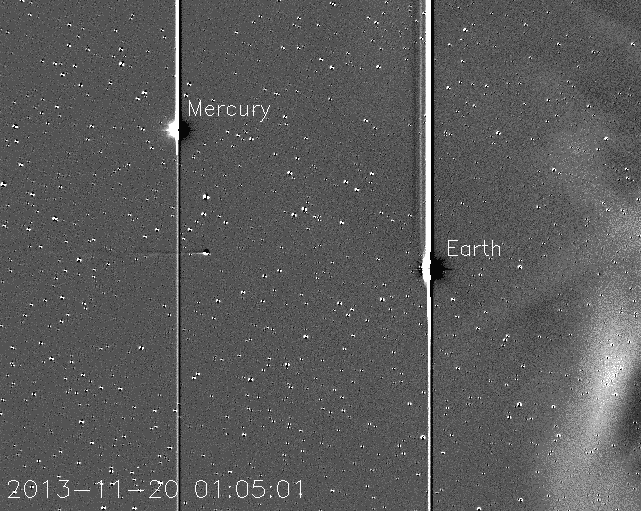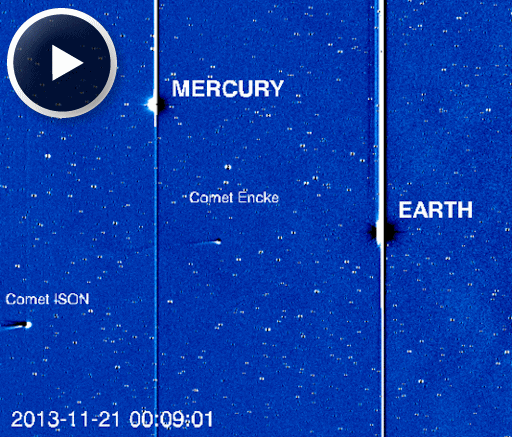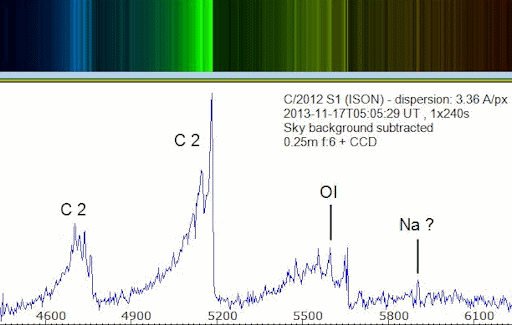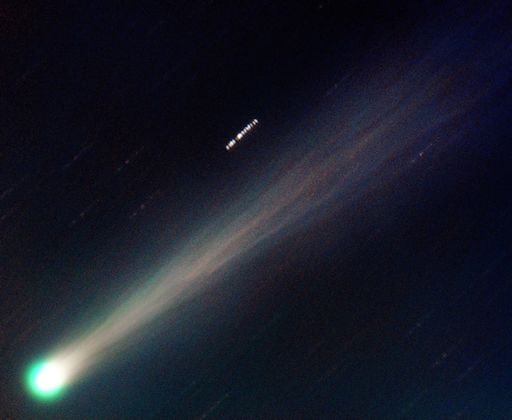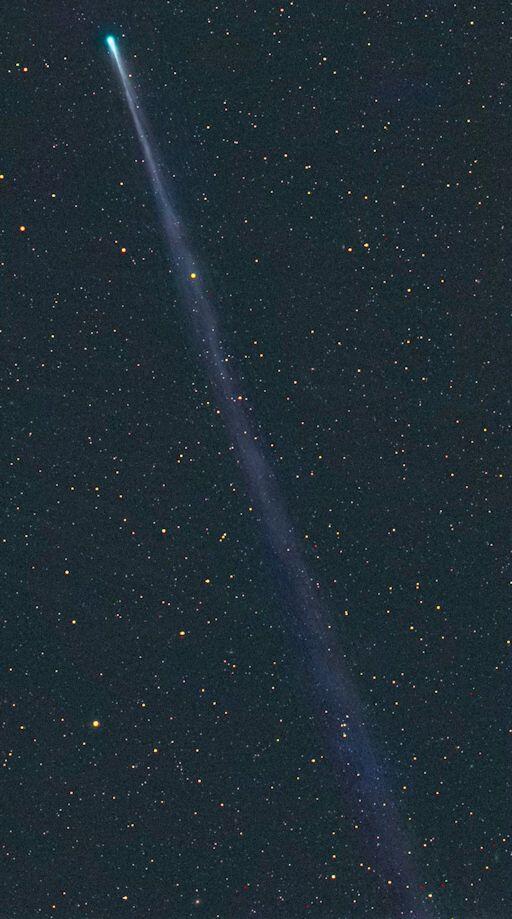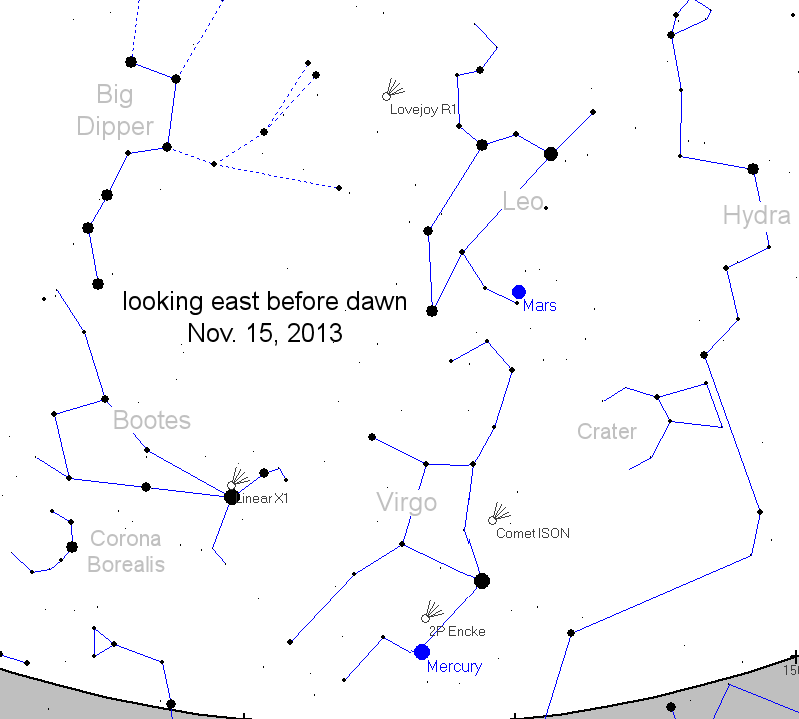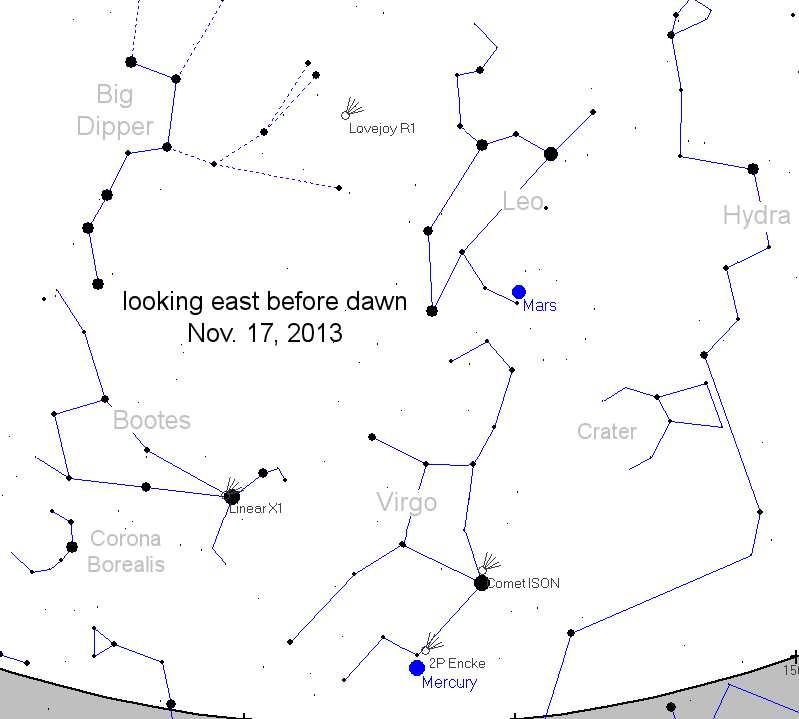Now since the closest
approaches of comet ISON is 15 days away and still it is expected to become
visible to naked eyes in the dawn, it is time for us to take our camera and
take some pictures of the night sky so as to brush up our knowledge and hands
on experience is astrophotography.
If you’re excited about this comet – and I’m guessing you
are, or you wouldn’t be here! – Then you probably won’t be content to just look
at other people’s pictures and you’ll want to take some photographs of them
yourself to enjoy in years to come. But how? Isn’t “astrophotography” hard?
Don’t you need huge lenses? And complicated, mega-expensive cameras?
No, no, and no.
If this comet is bright enough to be easily visible to the
naked eye, which we think/hope it will be, then taking their celestial
portraits will actually be pretty easy. In fact, you’ve probably got all the
gear you’ll need to do that already!
Taking images of the comet ISON will require a few
essentials.
- A camera (well, isn’t that obvious) with its
accessories.
- A Tripod
- Somewhere with a clear, unobstructed view of the
comet (East Direction as it is rising at 4 am in the morning)
- A camera release cable for long exposure and
also to avoid shake to the camera while clicking the shutter button.
- Let’s look at each of those in turn.
CAMERA:
If the comet is bright enough to be easily visible to the naked
eye, then the camera you already own will probably do the needful. I assume
that your camera is a digital one with
full or partial manual control (if you’re still using a film camera don’t
worry, you can still take photos of the comets, and most of this post will
still be relevant to you).
Oversimplifying it horrendously, I know, there are two types
of digital cameras basically – compact cameras (which are fitted with just one
lens, that may or may not zoom in and out), and digital SLRS (the more
expensive, heavy ones which let you use different lenses). As long as your compact camera is slightly
more advanced than a simple “point and shoot” one, i.e. it has different
settings for things like landscapes, portraits and sport, and has a flash that
can be turned off, you will be able to photograph the comets with it, if they
get nice and bright. If you have a “DSLR” then you will be able to take
pictures of the comets regardless of whether they attain naked eye visibility
or not, because you’ll be need to take exposures long enough to capture enough
light to get a picture.
So, assuming you have a “decent” camera, what else do you
need?
SOMETHING TO HOLD IT STEADY
One cannot take a long exposure just by holding the camera
in your hands. It will be very shaky and tiring. Which is why, a good, sturdy tripod
is required. Why do you need something to hold your camera steady, because
unless the comet in question is blazingly bright in the sky, you simply won’t
be able to hold your camera steady enough in your hands to get good pictures of
it. Any unsteadiness, any camera shake will result in a blurry, pretty rubbish
picture.
Thankfully, most
cameras now have a threaded hole in their bottom which allows you to put them
onto camera tripods, which are brilliant for astrophotography because you
absolutely MUST keep the camera steady while photographing the sky. If your
camera has a thread for a tripod, that’s brilliant, you’re halfway there! If
your camera doesn’t have a hole for a tripod screw, then you can always try
cobbling together something with tape or whatever to fix your camera to a
tripod, or get a kind of “clamp” from your local camera shop which will hold
your camera steady and screw onto a tripod, but…
What? You don’t have a tripod? Well, my advice would be to
go and get one, as soon as possible, you’re really going to need one when ISON
appears, trust me! But if you can’t right now, for whatever reason, then what
you can do is use a bean bag to keep your camera steady. You place the bean bag
on a wall, or the top of your car, or whatever, then put your camera on it and
push it down until it’s held securely in the bag. There. That’ll do. It’s all
about avoiding camera shake you see, and a camera on a bean bag is a lot
steadier than a hand held camera. In fact, it’s very, very unlikely that
handheld cameras will get very good pictures of the comets.
Ok… camera… being held steady… next?
CLEAR VIEW OF THE COMET
This might seem like common sense, but think about it. Are
you sure, and I mean sure, that you’ll be able to see these comets from where
you live, from your garden or nearby street? Are you sure that that tree over
there won’t be in the way? Are you positive that the nearby building won’t be
in the way..?
You need to do some research. Use the charts on this blog to
assess the comets’ visibility from where you live. Chances are that although
you might be able to see them, you won’t be able to see them WELL for a number
of reasons. That means finding a more suitable viewing – and photographing –
location. Maybe your local park will do, because it offers a view of more of
the sky? Or maybe the school playing field up the road will do? But places like
these suffer a lot from light pollution, so photos you take there will probably
suffer from orange glare and flares, which could ruin them. I’d definitely recommend
scouting out a few locations out of town, away from the streetlights,
advertising lights and security lights. Maybe a farm gateway, or a lay by, or a
quiet country road people hardly use? Find somewhere like that, with a clear
view of the sunrise sky for, a clear view all around for ISON.
RELEASE CABLE
The release cable is very important in case you are taking a
long exposure as the release of shutter for clicking the picture is attached to
the camera and while clicking shots at regular intervals will lead to shake in
camera. If we use auto timer in the camera or if we put for a delay then the
problem will be solved but it will be a tedious task for the photographer. We
can use a USB cable and connect a laptop to the camera so as to take pictures
from a distance without touching the camera. In case of a film camera, a
release cable is used to take pictures without touching the camera. The purpose
remains the same and also the function of the cable. If one wants to take a
good shake free picture of the comet, it is very necessary to use a release
cable or remote shooting method for the same.
I would suggest you to first
arrange these materials and then try to take some pictures of the sky and
objects in low light and see how things work. Framing of the comet is necessary
and hence you need to find some nice foreground in order to make the image look
attractive and better. Also the comet can be compared in terms of size and
magnitude if we have some foreground object and some known stars in the field.
This way you can use the image and extract some science out of it as well.
Soon this page will have link to
a public folder where you can share your images and also get expert comments on
that about the quality of the images and how to improve it in case there is
some problem. Also in the comment section you can ask questions related to “How
to Photograph this comet”. Next week another article on How to photograph this
comet with suggested settings of the camera will be featured. Till the time
enjoy trying and practicing.

